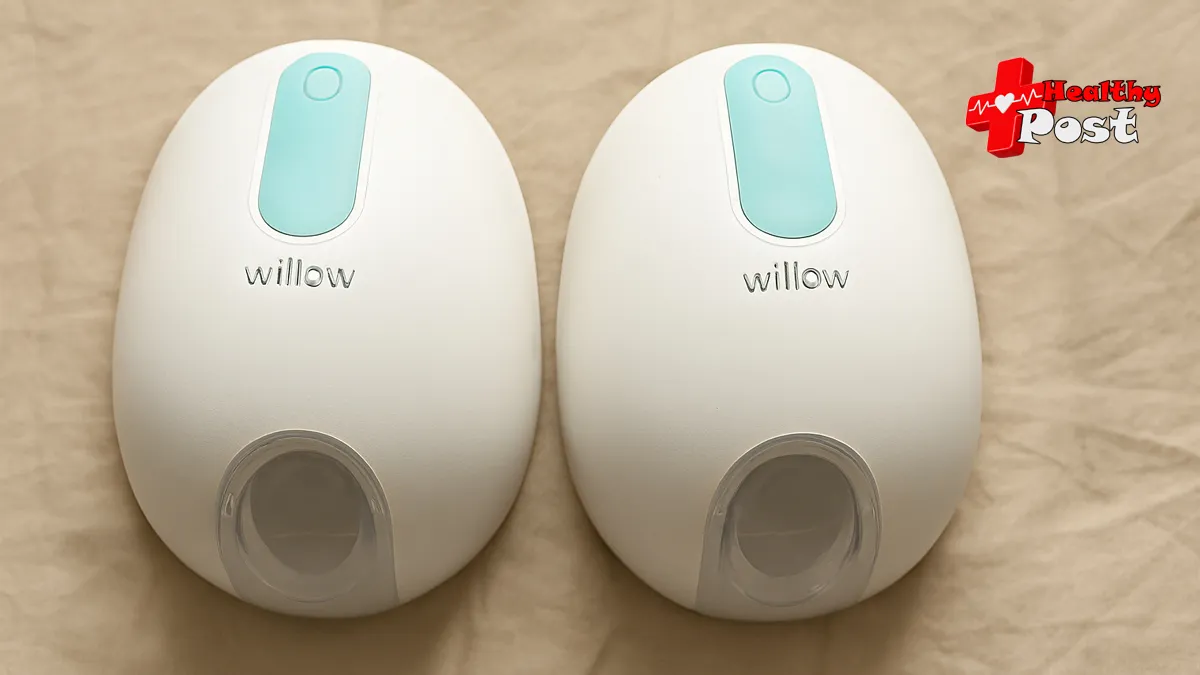
7 Amazing Benefits of the Willow Breast Pump Every New Mom Should Know
Becoming a new mom is beautiful—and overwhelming. Between feedings, naps, laundry, and simply trying to take a breath, pumping shouldn’t add more stress. If you’ve heard the buzz around the Willow breast pump, you might be wondering whether it’s really worth it. In this guide, we’ll walk through seven real-world benefits that make wearable, hands-free pumping a game-changer for many families, with practical tips, examples, and an easy-to-skim format. You’ll also find an SEO-friendly structure you can use in WordPress with Rank Math, plus a helpful comparison table.
Whether you’re exclusively pumping, combo feeding, or heading back to work, you deserve tools that support your routine—not complicate it.
Who This Guide Is For
- New moms considering a wearable, wireless breast pump
- Working parents who need efficient, discreet pumping
- Exclusive pumpers who care about comfort, output tracking, and convenience
- Anyone who wants to simplify the logistics of breastfeeding and pumping on the go
Quick Overview of Wearable Pumping (And Why It Matters)
Wearable breast pumps tuck into your bra so you can pump without being tethered to a wall. Many models are quiet, portable, and app-connected, letting you move around while collecting milk. For new moms juggling everything at once, that freedom can be priceless.
Secondary keywords (used naturally): wearable breast pump, hands-free pumping, wireless pump, portable breast pump, quiet pump, closed system, app-connected pump, back-to-work pumping, exclusive pumping.
Benefit 1: True Hands‑Free Mobility That Fits Real Life
Traditional pumps often involve sitting in one spot, juggling flanges and bottles, and pausing your day. A wearable, in-bra design turns that on its head and gives you back your time.
What that looks like in everyday life:
- Making breakfast or prepping bottles while you pump
- Taking conference calls or Zooms (video off if that’s your style)
- Walking the dog, folding laundry, or reading to your older kid
- Pumping during your commute or while traveling (airports, car rides—always safely and legally)
Real-life example:
- Mia, a first-time mom, pumps while making her toddler’s lunch and loading the dishwasher. She saves 30–45 minutes a day—time she uses to nap or shower (remember those?).
Why it matters:
- More flexibility means you can pump consistently without sacrificing the rest of your life. Consistency supports supply, reduces missed sessions, and lowers stress.
Pro tips:
- Pair with a supportive, high-coverage pumping or nursing bra to keep the cups snug.
- Keep a small tote with extra collection bags/containers, nipple balm, and wipes for quick resets on the go.
- Set gentle reminders on your phone or app so you don’t forget sessions during busy days.
Benefit 2: Discreet and Quiet, So You Can Pump Without the Spotlight
A big anxiety for many moms: noise and visibility. Wearable pumps are typically designed to be quieter than traditional motors, and they sit within your bra, which reduces the “I’m pumping right now” look.
Real-world wins:
- Office-friendly pumping without leaving your desk every time
- Discreet pumping during long meetings or flights
- Less self-consciousness when guests are around or you’re out and about
Comfort notes:
- Choose the right flange size (often 1–2 mm larger than your measured nipple diameter post-feed).
- Use nipple balm before sessions if you’re sensitive, especially early postpartum.
- Start at lower suction and increase gradually to avoid discomfort.
Supportive reminder:
- Discretion isn’t about hiding—it’s about having options that help you feel comfortable, confident, and in control.
Benefit 3: Fewer Spills, Fewer Parts, Less Stress
Milk is liquid gold—every drop counts. Many wearable systems are designed with leak-resistant or even spill-proof collection options and fewer parts to assemble, which can reduce those “sigh… again?” moments.
Why this helps:
- Spill-resistant designs are clutch when you’re moving from room to room.
- Fewer parts means less to sanitize and keep track of—especially helpful on sleep-deprived days.
- Closed-system pumps keep milk separate from the motor and tubing, supporting hygiene.
Real-life example:
- Sara pumps while rocking her baby. When her newborn finally nods off and she needs to bend to put them down, she doesn’t stress about losing milk to leaks.
Cleaning sanity-savers:
- Keep a labeled zip bag for “clean parts” and one for “used parts” in your work bag or diaper bag.
- Use the “fridge hack” during the day if it aligns with your comfort level and local guidelines: store assembled, used parts in a clean, sealed container in the fridge between sessions and wash once daily.
- Do a “Sunday reset” to sanitize parts, restock bags/containers, and pre-pack your pumping kit.
Benefit 4: App + Smart Tracking with the Willow breast pump
App-connected pumping can feel like personal assistant meets lactation log. You can access live session data, output trends, and helpful reminders—all without juggling notes.
Why tracking helps:
- See how time of day affects output and plan sessions around your highest-yield windows.
- Monitor which suction levels and cycle patterns work best for your body.
- Share trends with a lactation consultant for fine-tuned guidance.
- Celebrate wins: spotting your weekly ounces go up is a genuine morale boost.
Data to watch:
- Session length and average suction level
- Left vs. right output (imbalances are common and manageable)
- Daily/weekly totals and pumping frequency
- Comfort notes—jot down any tenderness or flange fit adjustments
Gentle mindset shift:
- Output isn’t a grade. It’s information. Use it to tweak your routine, not to judge yourself.
Benefit 5: Comfortable, Customizable Fit That Protects Your Supply
Fit and comfort aren’t “nice to have”—they’re essential for effective milk removal. A good fit supports better output and less irritation.
What to dial in:
- Flange size: Measure your nipple diameter after feeding/pumping and add 1–2 mm to get a starting size. Reassess as your body changes.
- Suction level: Start low and increase until you feel a strong, comfortable pull—not pain.
- Cycle patterns: Some pumps offer different modes to mimic let-down and expression phases. Experiment to find your best combo.
Signs your fit is off:
- Ring-shaped redness after sessions
- Nipple rubbing the sides of the flange or blanching (turning white)
- Persistent discomfort even at low suction
- Drops in output despite consistent sessions
Try this routine:
- Begin with a 1–2 minute “warm-up” massage to stimulate let-down.
- Use a warm compress if you tend to let down slowly.
- Relax shoulders, unclench jaw, and take slow breaths—tension can inhibit flow.
- End with a gentle breast massage or compression to fully empty.
If something feels off, a lactation consultant (IBCLC) can help you fine-tune settings and fit.
Benefit 6: Back-to-Work Friendly—Protects Your Routines and Your Peace
Going back to work is a huge transition. A wearable pump can help you keep pumping without flipping your schedule upside down.
Workday wins:
- Pump at your desk (or in a private space if you prefer) without long breaks or hunting for outlets.
- Squeeze in sessions during commute time, lunch, or between meetings.
- Discreet design reduces interruptions and questions you’d rather not field.
Schedule ideas:
- Start with 2–3 sessions during an 8–9 hour workday (e.g., 10:00 a.m., 1:00 p.m., 3:30 p.m.).
- Add a morning and evening session on busy days to maintain total daily volume.
- Sync reminders in your calendar so meetings don’t crowd out pumping.
Storage tips:
- Use labeled, dated milk storage bags or containers.
- Keep a small cooler with ice packs if you don’t have access to a fridge.
- Rotate your milk: first in, first out.
Empathy moment:
- Your pumping routine doesn’t have to be perfect to be powerful. Consistency beats perfection.
Benefit 7: Confidence and Consistency—The Invisible Superpowers
Beyond the tech and features, the real benefit is emotional: fewer barriers to pumping often translates to more confidence. When pumping becomes simpler, you’re more likely to stick with it—and that steadiness supports your goals, whatever they are.
Ways this shows up:
- You stop dreading sessions and start fitting them in naturally
- Days with a curveball don’t completely derail your plan
- You feel more in control, which lightens the mental load
If you hit a rough patch:
- Remember that supply fluctuates for many reasons (hydration, stress, illness, cycle changes).
- Measure progress weekly, not hourly.
- Adjust your plan as your baby grows—what worked at 6 weeks may change by 3 months.
Visual Aid: Quick Comparison of Wearable Pump Features
This table outlines common considerations moms evaluate when choosing a wearable pump. Use it to think through what matters most for your routine.
| Feature | Why It Matters | What to Look For |
|---|---|---|
| Portability | Easier to pump anywhere, anytime | In-bra design, lightweight, good battery life |
| Noise Level | Discretion at work/in public | “Quiet” or “low-noise” specs, user reviews |
| Spill Resistance | Protects milk during movement | Secure latching, leak-resistant or spill-proof options |
| Cleaning | Saves time, supports hygiene | Fewer parts, closed system, dishwasher-safe components |
| App & Tracking | Helps optimize output and timing | Session logs, left/right output, reminders |
| Fit Options | Comfort and supply protection | Multiple flange sizes, soft silicone, flexible settings |
| Cost & Accessories | Budget planning | Bag/container costs, spare parts, warranty/support |
Tip: Make a shortlist of your top three priorities (e.g., “quiet, easy to clean, app tracking”) and evaluate pumps against those needs.
Troubleshooting Common Wearable Pump Challenges
Because every body is unique, you may need a little trial-and-error.
- Output seems low at first
- Warm compress + breast massage before pumping
- Try a different flange size or suction pattern
- Add a short “power pump” session 1–3 times weekly
- Nipple soreness
- Recheck flange fit
- Lower suction and increase gradually
- Use nipple balm or a hydrogel pad between sessions (if recommended)
- Leaks or loss of suction
- Ensure parts are fully dry before assembly
- Replace worn valves or seals regularly
- Make sure bra provides enough support to keep cups aligned
- App not syncing
- Update the app, reboot Bluetooth, and reconnect
- Check that battery levels are sufficient
- Log sessions manually as a backup so you don’t lose data
Remember: none of this is a reflection of you. It’s about finding the right setup for your body and routine.
Real-Life Mini Scenarios
- The multitasker: Pump during school drop-off line (parked, of course) and a mid-morning email block.
- The traveler: Pump discreetly in airport family rooms or while waiting at a gate, then store milk in a cooler bag with ice packs.
- The meeting marathoner: Pump quietly during a webinar or long training session.
- The night-shift parent: Schedule sessions during predictable slow periods; use app reminders to stay on track when fatigued.
How to Set Up a Simple Daily Pumping Plan
- Morning: Pump after the first feeding when supply is naturally higher.
- Midday: Add a session during baby’s longest nap.
- Afternoon or evening: Another session to round out daily volume.
- Optional: A short “dream pump” before your bedtime if you’re building a freezer stash.
Keep it flexible:
- If you miss a session, add 10–15 minutes to your next one, or tack on a short extra session that day.
- Over time, you’ll see patterns that help you refine your plan.
With the Willow breast pump, you can build a routine that grows with you
This isn’t just about equipment—it’s about choosing a tool that supports your goals and your life rhythm. With the right fit, smart tracking, and a routine that reflects your season of life, you can reduce stress and protect your supply.
Key mindset reminders:
- Your worth is not measured in ounces.
- Progress over perfection.
- Your comfort matters—physically and emotionally.
Rank Math SEO Tips for WordPress Users
If you’re publishing a review or guide (like this one), here’s how to optimize it with Rank Math:
- Focus keyword: Set “Willow breast pump” as your primary keyword.
- Title & meta: Include the keyword in your SEO title and meta description. Keep the title under 60 characters and the description around 155–160.
- Headings: Place the focus keyword in at least one H2 and naturally throughout the article.
- URL slug: Use a short, readable slug like “/willow-breast-pump-benefits/”.
- Image alt text: Add descriptive alt text to images (e.g., “wearable hands-free breast pump in bra”).
- Internal/external links: Link to related breastfeeding and pumping resources, and reputable external sources for credibility.
- Readability: Short paragraphs, clear headings, bullet points, and a helpful table (like the one above).
- Schema: Use Article schema; consider FAQ schema if you include a Q&A section.
- Content depth: Aim for 2,000+ words with original, actionable advice—Google and readers value depth and clarity.
FAQs
- How long does a wearable pump session take?
Generally 15–25 minutes, but it varies by individual. Some moms find 10 minutes sufficient after let-down; others prefer 20+ minutes for full comfort and output. - Will a wearable pump replace my traditional pump?
For many, yes. Others like having both: a wearable for mobility and a traditional for power sessions. Test what works best for your body and schedule. - Is a wearable pump good for exclusive pumping?
It can be. The key is consistency, good fit, and settings that support full emptying. Many exclusive pumpers rely on wearables; others mix systems. - How do I choose the right flange size?
Measure your nipple diameter after a session and add 1–2 mm. If you notice rubbing, blanching, or discomfort, try a different size and consult an IBCLC if possible.
If you’re considering the Willow breast pump, here’s how to decide
- List your top needs (e.g., hands-free, quiet, easy to clean, spill-resistant).
- Compare features using the table above.
- Consider your lifestyle (commute, work environment, other kids, travel).
- Try it for two weeks and track comfort, output, and convenience—then decide if it’s your long-term match.
You are not behind. You are not doing it wrong. You’re learning what works for you and your baby—and that’s exactly right.
Conclusion: The Willow breast pump can make pumping less stressful and more sustainable
When you’re caring for a newborn, every minute matters. A wearable, hands-free pump offers freedom, discretion, smart tracking, and a more comfortable routine—benefits that add up to lower stress and more confidence. If your goal is to pump without pausing your life, this could be the supportive tool you’ve been looking for.
Next step:
- Define your top priorities and try a wearable pump with an open mind and a flexible plan. You deserve a setup that makes feeding your baby feel doable—and even a little easier—every day.

